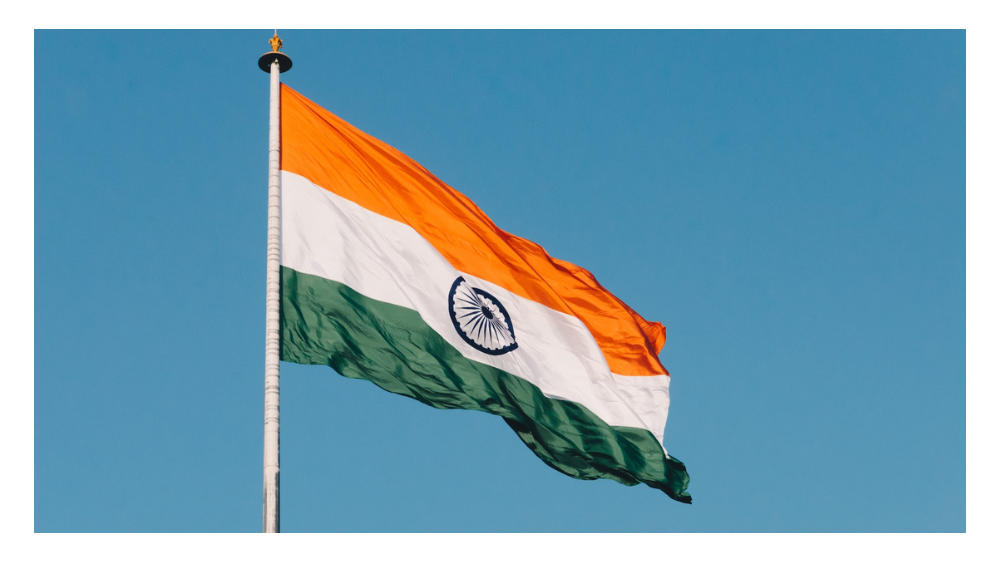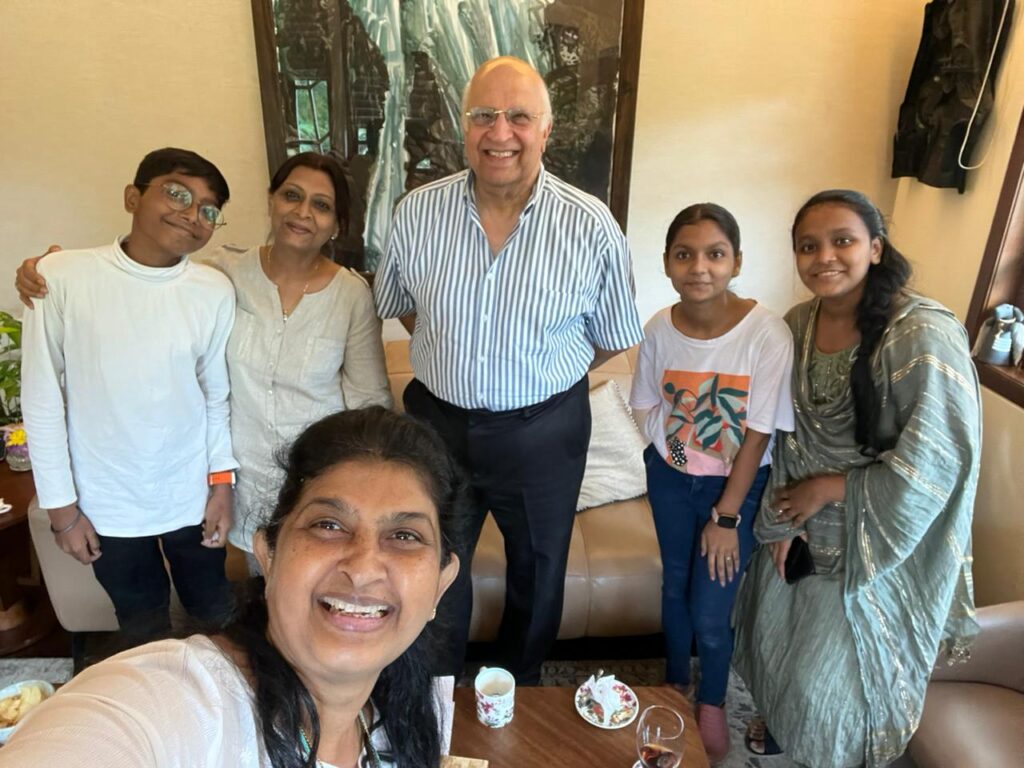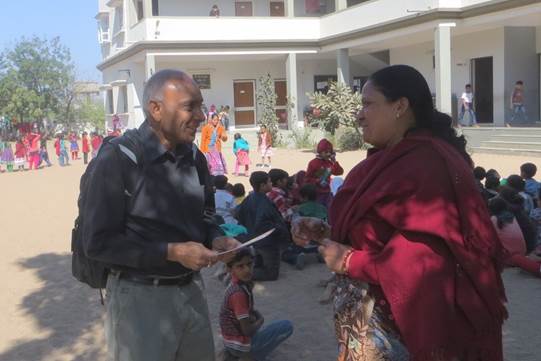Indian American Philanthropy: A Tradition of Seeding Change and Inspiring Giving

Indian Americans have a long history of philanthropy, and the tradition continues to thrive with the current and next generation. In this piece, Sharmila Rao Thakkar explores the various trends and motivations behind Indian American philanthropy—as well as share more about the first-ever India Giving Day that took place on March 2, 2023 and that will become a new annual tradition.
Introduction
Indian Americans are one of the wealthiest and fastest-growing ethnic groups in the United States. Many Indian Americans are using their success to give back to their communities through philanthropy. During the lead up to the inaugural India Giving Day, held on March 2, 2023, we had the opportunity to speak with several Indian American philanthropists who shed light on the motivations and giving trends in the community.
These philanthropists believe that giving back is not just about writing a check, but also about making a verifiable difference in the lives of others. They are actively engaged in supporting causes that are important to them, and they are using their resources and expertise to both create lasting change and to inspire others to get involved in philanthropy.
Philanthropic Values and Approaches: Giving Back is a Duty
For many Indian Americans, giving back is a duty. It is a way to pay it forward and recognize the opportunities that they have been given to achieve success. “We are privileged to be in this position,” says philanthropist Rajesh Shah of the Shah Happiness Foundation. “It’s our responsibility to give back. Most of our giving is related to effectively bringing equal opportunity to as many people as possible. From there they can use their drive, motivation, creativity and ingenuity to lift others up. It’s ultimately a virtuous cycle.”
Ruyintan Mehta, too, shares a deep sense of obligation to give back to India due to the world-class education he received. He takes a hands-on approach to his giving, visiting India, conducting due diligence, and funding smaller and more nimble organizations that can make an immediate impact. The one piece of advice Mehta hopes others will heed: “We need a culture shift from one of a scarcity mindset that leaves some thinking in terms of not enough to one of abundance, where we can inspire each other to give as much as we can.”

Ruyintan Mehta visiting with Akanksha Alumni and staff in Mumbai, July 2023
Relationship-building and learning are key for Mehta, who sees his role as a messenger to encourage giving amongst his colleagues and friends, to engender gratitude for the generosity from which he’s benefited. While he’s not certain his children will support similar causes, or efforts in India at all, he does ensure that the people he encounters, including his family, understand that wealth is relative and what we have can make a significant difference in India.
“If I were to characterize how we approach our philanthropy, first and foremost it would be about having a big heart; you need generosity, and you have to have the spirit of giving – which for me was innate (and now something we try to bring to our next generation),” shares Suri Sehgal of the Sehgal Foundation. “Time and patience to learn, to understand what works and doesn’t, and then to tweak our funding to achieve the greatest impact—this has marked our philanthropic journey, principles of learning and relationship building, which coincidentally are also guiding principles from our business.”
By giving of their time, talent, treasure, ties, and testimony, Indian Americans are drawing on an understanding of giving back as a duty and encouraging others to do the same.
India Giving Day
Indian Americans tend to be highly engaged in their philanthropy, with many taking an active role in the organizations they support. In addition to giving, this includes serving on boards, providing guidance to the organizations they support, and getting involved on the ground for programs they support in India. This high level of engagement is often driven by a desire to ensure that their donations are being used effectively and making a real difference with solutions that address root causes.
One notable example of Indian Americans’ commitment to philanthropy is the first-ever India Giving Day, which was held on March 2, 2023, to create awareness, bring donors together, educate our communities about opportunities, and direct giving to vetted causes. The initiative aimed to inspire more giving among Indian Americans and others who care about India. More than $1.3M dollars from over 1000 donors were raised during the event.
“We need a bigger pie. Efforts like India Giving Day help us broaden the pool. If we want lasting impact, we need more resources. Everyone can give, no matter the amount.” – Suri Sehgal, PhD, Sehgal Foundation
The India Philanthropy Alliance (IPA), a network of leading India-focused non-profits in the U.S., seeded the initiative to bring more coordination in supporting a range of causes in India. It included outreach via an online platform, social media and live peer engagement opportunities. The campaign was celebrated through a series of online and in-person gatherings held throughout the country, including signature events in Washington, Dallas, and Chicago, and collaborative and collective giving, with $100,000 in matching funds and other incentives to maximize the impact of donations.
One of the main challenges in Indian American philanthropy is sourcing organizations to support. Events like India Giving Day provide a platform for donors to identify high-impact organizations and make informed decisions about their giving. Sapphira Goradia Shaw, who leads her family’s The Vijay and Marie Goradia Foundation and served as a National Co-chair for the campaign, appreciates any effort to highlight quality, effective organizations and provide a platform they otherwise may not have: “It’s a win-win all around.”
The success of this initiative highlights the potential for Indian American philanthropy to have a significant impact—here and abroad. By coming together, sharing lessons learned, and leveraging their resources, Indian American philanthropists are building a culture of giving and crafting stronger, more resilient networks ready to respond to community needs.
Funding Education as a Path to Social Change
As their parents often emphasized the importance of education as a ticket to success, many Indian American philanthropists place a high value on education and often give to educational causes. Having experienced the benefits of economic security and social mobility via their access to education, many feel it is key to solving many of India’s social and economic issues.
“Our belief is that if we can equalize the starting line, there is so much that can be accomplished. There are some major issues in the world today from health concerns, inequality in access to opportunities, lack of mentorship and educators, and all of the additional issues that come with poverty. Most of these can be solved in the long run by providing access to the resources and tools needed to create that upward trajectory at the outset,” says Shah.
Goradia Shaw similarly believes in the importance of education saying, “Education is the only way to break the cycle of poverty. The work we fund is not a bandaid, we work to address root causes, to fund those solving the problems—those who are providing access to resources and changing the systems so that the problems won’t exist at all eventually.”
The Seghal Foundation adamantly believes that a community-driven approach that centers women’s empowerment is what distinguishes their work. Dr. Sehgal and his nephew Jay Sehgal, who helps manage the foundation, reiterate that starting with educating girls and young women makes sense because they are the gateway to health and well-being of entire communities.
By prioritizing education, Indian Americans are helping to ensure future generations have the same opportunities for success they received.
Sustainable Solutions
In addition to education, many Indian American donors place a high value on funding that supports sustainable and scalable solutions.
Community engagement and leadership development, by working with or alongside the community, drives the Sehgal’s approach to sustainability. They empower local community leaders to take ownership of a project while it is being built and manage the programs and schools they help modernize. Thinking upfront about impact and sustainability makes exit easy, as the community is well-prepared to assume responsibility for the project. As Dr. Sehgal states, “True partnership and collaboration mean that when they take on the responsibility and have accountability, they can be sustainable. This model is not only what works, but is also what the community wants and will thrive with.”
Goradia Shaw’s background in public health helps her deliver on her family’s philanthropic goals to create scale and sustainability. They focus on local leadership and partnerships that apply a trust-based approach which honors the expertise of those closest to the work, and exclusively provide multi-year general operating support, which has been shown to be invaluable to organizations with the most promise for success.
Philanthropist Arvind Amin says, “As business leaders and entrepreneurs, the number one metric we often look for is long-term return on investment. This is true in business and philanthropy. We choose which organizations to fund based on where our limited resources will be effectively utilized. Our ability to visit and experience the work first-hand helps us to make sound investments. It’s important that the nonprofits have sustaining impact that will lead to overall social development. Empowering the next generation is our guiding principle to ensure that.”

Arvind Amin visiting a elementary school in India.
Engaging the Next Generation & Honoring Legacy
While first generation Indian Americans tend to focus on giving to their home country of origin, one of the challenges remains how to involve the next generation in the family’s diasporic philanthropy. What seems to work well for many families is early engagement and learning with more responsibility and leadership over time.
Mena and Sarika Amin are carrying on their family’s legacy by focusing on social justice and equity. Young donors like them are looking for ways to support organizations that are working to address systemic issues and create lasting change. “Just the mere act of dad asking questions and the storytelling about what moves him has inspired our giving. Having his support and learning from him provide us with the motivation and insight we need at this stage.” Family conversations around the dinner table and on vacations taught the sisters to identify what they care about, conduct due diligence, select organizations, share their findings and make the case for support.
Goradia Shaw notes that it’s important to “teach children the value of giving and the reasons behind a family’s philanthropy.” By involving them in philanthropic activities early on, Indian American families can instill a sense of responsibility and a passion for giving back. In her case, she works closely with her parents to choose the organizations they support and partner with. While she brings her own perspective to her giving, it’s important that her parents’ values continue to be reflected in the foundation’s priorities.
Dr. Sehgal has seen that providing leeway to learn with a bit of guidance, especially recognizing the significant role that parents have in helping to pass along values, has worked best. He is thrilled that the youth in his family have taken the independence they’ve been allowed to explore and learn on their own, bringing the needs of the community to the leadership for discussion.
By inspiring young people with the philanthropic pursuits of their family members and encouraging them to use their strengths and talents to give back in a meaningful way, Indian American philanthropists hope to create a culture of giving that will continue for generations.
Conclusion
The tradition of giving in Indian American communities, with donors supporting a range of causes and using a variety of approaches, is a testament to the power of philanthropy to create meaningful change and inspire future generations to give back as well. India Giving Day has been an important step in promoting philanthropy among Indian Americans and highlighting the value of working together and leveraging collective resources. It is clear as the Indian American community continues to grow and thrive, philanthropy will undoubtedly play an important role in shaping the future of this community and making a positive impact in the sector.
Note: India Giving Day 2024 will take place on March 1.
Sharmila Rao Thakkar is a philanthropy & Nonprofit Advisor at SRT Advising & Consulting.
The views and opinions expressed in individual blog posts are those of the author(s) and do not necessarily reflect the official policy or position of the National Center for Family Philanthropy.
